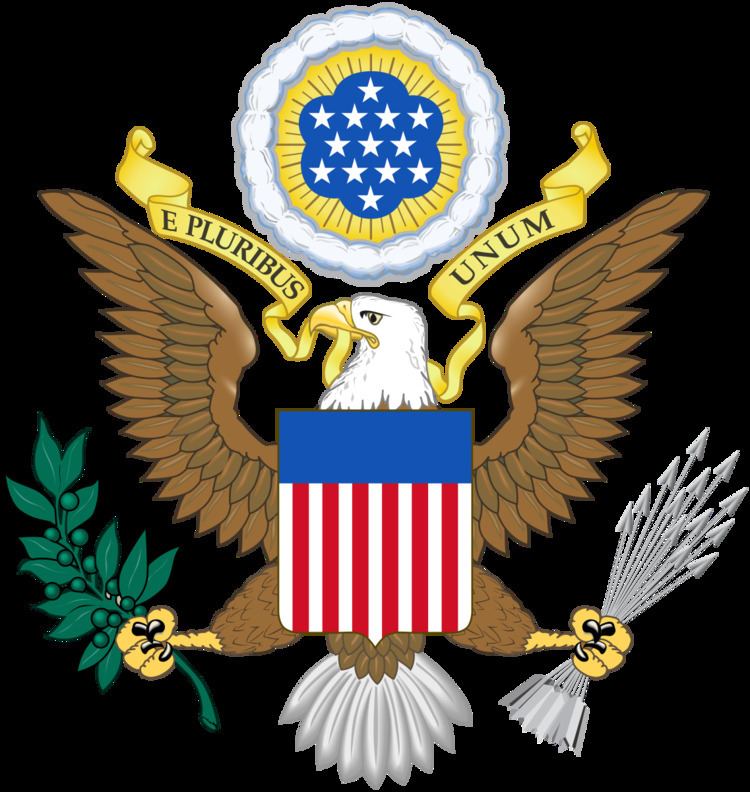 | ||
The President of the United States is the elected head of state and head of government of the United States. The president leads the executive branch of the federal government and is the commander-in-chief of the United States Armed Forces. The president is indirectly elected to a four-year term by the people through an Electoral College (or by the House of Representatives, should the Electoral College fail to award an absolute majority of votes to any person).
Since the office was established in 1789, 44 people have served as president. The first, George Washington, won a unanimous vote of the Electoral College. Grover Cleveland served two non-consecutive terms in office, and is counted as the nation's 22nd and 24th president. Thus the incumbent, Donald Trump, is the nation's 45th president. There are currently five living former presidents. The most recent death of a former president was on December 26, 2006 with the death of Gerald Ford; the most recently serving president to die was Ronald Reagan on June 5, 2004.
William Henry Harrison spent the shortest time in office, dying 31 days after taking office in 1841. Franklin D. Roosevelt served the longest, over twelve years, before dying early in his fourth term in 1945; he is the only president to have served more than two terms. Since the ratification of the Twenty-second Amendment to the United States Constitution in 1951, no person may be elected president more than twice, and no one who has served more than two years of a term to which someone else was elected may be elected more than once.
Of the individuals elected as president, four died in office of natural causes (William Henry Harrison, Zachary Taylor, Warren G. Harding, and Franklin D. Roosevelt), four were assassinated (Abraham Lincoln, James A. Garfield, William McKinley, and John F. Kennedy), and one resigned (Richard Nixon). John Tyler was the first vice president to assume the presidency intra-term, and set the precedent that a vice president who does so becomes the fully functioning president with his own presidency, as opposed to a caretaker president. The Twenty-fifth Amendment to the Constitution put Tyler's precedent into law in 1967. It also established a mechanism by which an intra-term vacancy in the vice presidency could be filled. Richard Nixon was the first president to fill a vacancy under this Provision when he appointed Gerald Ford to the office. Later, Ford became the second to do so when he appointed Nelson Rockefeller to succeed him. Previously, an intra-term vacancy was left unfilled.
Throughout most of its history, politics of the United States have been dominated by political parties. The Constitution is silent on the issue of political parties, and at the time it came into force in 1789, there were no parties. Soon after the 1st Congress convened, factions began rallying around dominant Washington Administration officials, such as Alexander Hamilton and Thomas Jefferson. Greatly concerned about the very real capacity of political parties to destroy the fragile unity holding the nation together, Washington remained unaffiliated with any political faction or party throughout his eight-year presidency. He was, and remains, the only U.S. president never to be affiliated with a political party. Since Washington, every president has been affiliated with a political party at the time they assumed office.
Subsequent public service
Four presidents held other high U.S. federal offices after leaving the presidency.
Several presidents campaigned unsuccessfully for other U.S. state or federal elective offices after leaving the presidency.
Additionally, one former president, John Tyler, served in the government of the Confederate States during the American Civil War. Tyler served in the Provisional Confederate Congress from 1861 to 1862. He was elected to the Confederate House of Representatives in November 1861, but died before he could take his seat.
